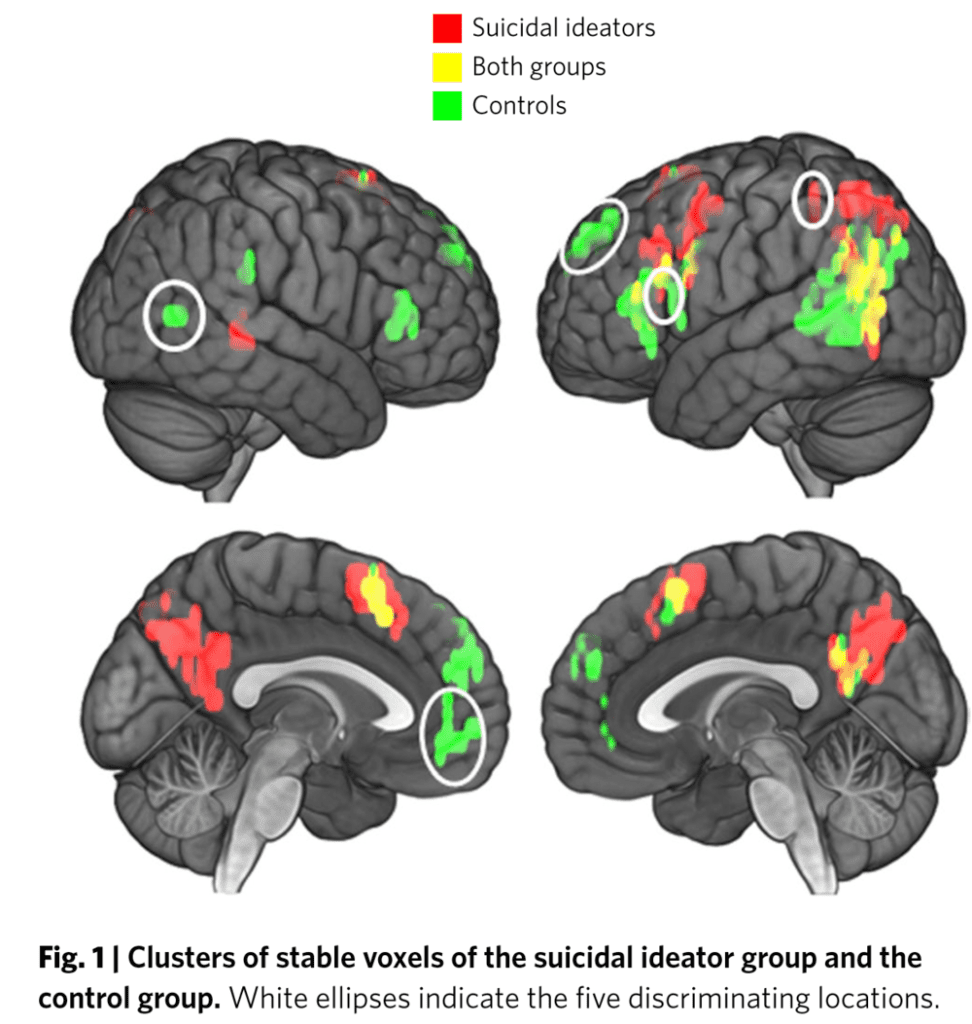It’s an impressive success for the algorithm, but it’s not exactly clear how to best apply these findings. Researchers successfully identified people with suicidal tendencies with 91% success, using only 6 words: Death, Cruelty, Trouble, Carefree, Good, Praise.

Tackling suicide is never easy and straightforward. When it comes to identifying these tendencies, researchers and medics typically ask patients. But studies have shown that 80% of patients who committed suicide deny these ideas up until the last moment.
With that in mind, researchers devised a test to objectively assess suicidal plans. They carried out a trial with 17 adults with suicidal ideation and 17 control subjects. The participants had their brain scanned with an fMRI while they listened to words like ‘death’ and ‘cruelty’. Researchers then employed a machine-learning algorithm to identify patterns in the participants’ brains as they heard the words. The scientists were able to successfully detect 15 of the 17 suicidal brains and 16 of the 17 controls.
However, there are significant caveats to this study, and we shouldn’t expect it in hospitals anytime soon, said lead researchers Dr. Marcel Just told Perry Wilson at The Methods Man. The first problem is money — fMRIs are expensive and there’s usually a huge queue for them. Having stressed and potentially suicidal people lie still in a small, dark and noisy machine is certainly less than ideal.
“It would be nice to see if we could possibly do this using EEG, if we could assess the thought alterations with EEG. It would be enormously cheaper. More widely used.”
Secondly, the algorithm was able to perform so well is because patients were open about their tendencies in the first place. If they wanted to hide these thoughts, as you’d expect in a real-life scenario, they could almost certainly do so.
“If somebody didn’t want others to know what they are thinking, they can certainly block that method. They can not coorperate. I don’t think we have a way to get at people’s thoughts against their will.”
However, as pointed out by Wilson, today’s expensive fMRI is tomorrow’s EEG, and next year’s iPhone app. At the rate at which technology continues to develop, a similar approach could soon be incorporated into some sort of precision medicine, and it gives us another glimpse into how our thoughts cluster around words and ideas.
Journal Reference: Marcel Adam Just, Lisa Pan, Vladimir L. Cherkassky, Dana L. McMakin, Christine Cha, Matthew K. Nock & David Brent. Machine learning of neural representations of suicide and emotion concepts identifies suicidal youth. doi:10.1038/s41562-017-0234-y



